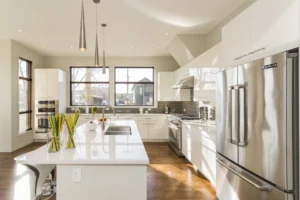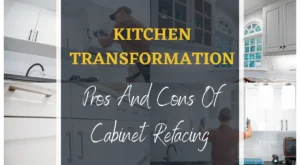Cost-Cutting Strategies: Efficient Ways to Build Your Dream House on a Budget
Building your dream home can be an exciting and fulfilling journey, but it often comes with a hefty price tag. However, the good news is that with careful planning and smart decision-making, creating your dream house can be more affordable than you might think. The thought of crafting a space that reflects their personality caters to their needs, and exudes comfort and warmth is undeniably alluring. However, the reality is often hindered by the financial constraints that come with such an endeavor. The good news is that with effective cost-cutting strategies, constructing your dream home on a budget is not only possible but also a rewarding and fulfilling experience.
The Importance of Cost-Cutting Strategies
Constructing a dream home involves a delicate balance between desires and financial capabilities. Adopting cost-cutting strategies is essential to ensure that every penny spent contributes to the realization of your vision. These strategies empower individuals to make informed decisions, prioritize needs versus wants, and maximize value without compromising quality.
Planning for Efficiency
Cost-cutting begins long before the construction work commences. Proper planning is crucial to ensure that each aspect of the project is thoroughly thought through and cost-optimized. This involves creating a detailed budget, conducting thorough research on materials and construction methods, and seeking professional advice to avoid costly mistakes.
Material Selection and Procurement
Choosing the right materials is a critical part of cost-cutting strategies. Opting for affordable yet durable materials ensures long-term savings and reduces the overall construction cost. Additionally, exploring alternative materials that offer similar functionalities can lead to significant savings while maintaining the desired aesthetic appeal.
Collaborative Design and Architectural Creativity
Involving an experienced architect and designers can help strike a perfect balance between your dream house and your budget constraints. Collaboration allows you to explore creative design solutions, clever space optimization, and innovative cost-saving ideas that don’t compromise on style or functionality.
Energy-Efficient Choices
Considering energy-efficient solutions during the planning and construction phase can save homeowners a considerable amount of money in the long run. From insulation and solar panels to efficient appliances and lighting, incorporating sustainable elements in your dream home can significantly reduce energy bills while also benefiting the environment.
DIY Approach and Sweat Equity
Putting in some elbow grease and adopting a do-it-yourself (DIY) approach can be a cost-effective way to build your dream house. Taking on certain tasks yourself, such as painting, landscaping, or installing fixtures, can save money on labor costs, allowing you to allocate those.
Factors to Weigh
1. Size and layout: Opt for a smaller footprint and efficient layout that maximizes functional space rather than focusing on unnecessary square footage.
2. Construction materials: Choose cost-effective materials that still offer durability and aesthetics. For example, consider alternative building materials like insulated concrete forms (ICFs) or recycled building materials.
3. Energy efficiency: Invest in energy-efficient appliances, insulation, windows, and HVAC systems. This will not only reduce your energy bills but also add long-term value to your home.
4. Design simplicity: Keep the design simple and minimize elaborate architectural details or customizations that can significantly add to the cost.
5. DIY projects: Consider taking on certain tasks yourself, such as painting or minor renovations, to save on labor costs. However, be realistic about your skill set and seek professional help for complex tasks.
6. Prioritize essential spaces: Focus your resources on crucial areas of the house, such as the kitchen and bathrooms, while considering more cost-effective options for less frequently used spaces.
7. Long-term maintenance costs: Consider the maintenance and upkeep costs associated with different materials and systems when making decisions. It’s often more cost-effective to invest in higher-quality products upfront to avoid ongoing maintenance expenses.
8. Value engineering: Work with your architect or builder to review the plans and identify areas where costs can be cut without compromising quality or safety.
9. Time management: Efficient project management can help reduce costs. Minimize delays, coordinate materials and labor effectively, and avoid rework by planning the construction process meticulously.
10. Research and compare prices: Take the time to research and obtain multiple quotes from different suppliers and contractors. This will allow you to compare prices and negotiate for the best deals.
Remember, it’s important to strike a balance between cost-cutting and ensuring that the quality and functionality of your dream house are not compromised.
Best Practices for Installation and Maintenance
1. Plan and design efficiently: Before starting any construction, spend time on proper planning and design to ensure the cost-effective use of materials and space. Consider open floor plans and multipurpose rooms to maximize functionality while minimizing construction costs.
2. Use energy-efficient materials and appliances: Invest in energy-efficient materials, such as LED lighting, insulation, and low-flow plumbing fixtures. These choices will not only reduce your energy bills but also promote sustainable living.
3. Opt for durable and low-maintenance materials: Choose building materials that require minimal upkeep and have a long lifespan. For example, opt for vinyl or fiber cement siding instead of wood, as they are more durable and require less maintenance.
4. DIY where possible: Consider taking on some do-it-yourself (DIY) projects if you have the necessary skills and tools. This can save you money on labor costs for tasks such as painting, tiling, or basic carpentry work.
5. Shop around for affordable materials: Take the time to research and compare prices for construction materials. Look for discounts, sales, and clearance items to save money without compromising on quality.
6. Properly maintain your house: Regular maintenance is essential to prevent small issues from turning into costly repairs later on. Keep up with tasks like cleaning gutters, inspecting the roof, and maintaining HVAC systems to prolong their lifespan and avoid bigger expenses down the line.
7. Incorporate sustainable practices: Implement eco-friendly practices like rainwater harvesting, solar energy systems, and composting to reduce long-term costs and minimize your environmental impact.
8. Invest in good insulation: Proper insulation can significantly reduce heating and cooling costs. Insulate walls, roofs, and attics effectively to prevent energy loss and maintain a comfortable indoor temperature.
9. Optimize natural light: Make the most of natural light by strategically placing windows and skylights. This will reduce the need for artificial lighting during the day and save on electricity bills.
10. Consider low-cost landscaping options: Landscaping can greatly enhance the curb appeal of your home, but it can also be costly. Opt for low-cost options like native plants, seeds instead of sod, and DIY landscaping projects to create an appealing outdoor space without breaking the bank.
Remember, it’s important to strike a balance between cutting costs and ensuring the quality and safety of your dream home.
Building a dream house on a budget requires smart cost-cutting strategies. Prioritize and plan expenses wisely to save money without compromising quality or aesthetics. Opt for affordable materials and optimize the layout to minimize construction costs. Explore energy-efficient options to reduce long-term expenses. Seek professional advice and be open to alternative solutions. Following these strategies ensures your dream home while maintaining financial stability. If you need help with cost-effective methods and installation, reach out to us for guidance. We’re here to assist with any questions or concerns.



